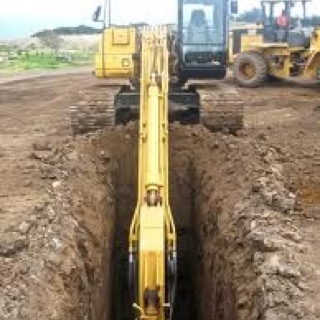Information
-
Job Address
-
Prepared by
-
CSO Responsible for this Job
-
Conducted on
UNDERTAKING
-
Unauthorised access to your site could result in serious injuries or fatality, as well as theft and vandalism.
A person with management or control of a workplace at which construction work is carried out must
ensure, so far as is reasonably practicable, the workplace is secured from unauthorised access.
This includes ensuring the site or the work area is secure prior to leaving, especially if hazards are
present.
For sites in close proximity to a route travelled by children, such as a school, park or recreational area,
consider installing a perimeter fence if hazards cannot be removed or secured against unauthorised
access.
USE THIS CHECKLIST TO HELP PREVENT UNAUTHORISED ENTRY TO YOUR SITE AND TO MAKE SURE YOUR SITE IS SAFE.
Signage
-
Principal contractors name (builders name)
-
Contact phone number (contactable 24/7).
-
Contact person’s name
-
warning signage has been erected to warn potential intruders of security measures that have been implemented on site.
Fencing
-
has a minimal gap underneath, with no holes or depressions in the ground that would allow a child to crawl under it
-
has a chain and lock fitted at the gate. The chain should not be so long that gates can be opened enough to allow someone or a child to slip through
-
fence panels that are securely clamped. Tie wire or cable ties should not be used to secure posts together
-
is constructed securely to prevent collapse in high winds or uneven ground. Use appropriate fencing configurations, counterweights and baseplates along with brackets or braces to ensure your site fence will not topple over. Consider the use of concreted posts and chain wire fence instead of temporary mesh fence if the installation needs to be more secure;
-
is constructed using appropriate material to prevent foot holds and deter climbing. That means no reo mesh and no mesh greater than 75mm wide (see Australian Standard 4687-2007). Also check to make sure nothing, such as pallets and or other construction materials, are adjacent to the fence which can be used to climb it
-
is appropriate for the site conditions, taking into account proximity to schools, houses, playgrounds and other public areas including pubs and clubs. Some sites are more likely to have unwanted visitors such as curious children or people wandering the streets after a night drinking. It is especially important that security in these areas is increased
-
is complete with no gaps or missing panels and joins any existing fencing or structures. Shrubs or trees are not acceptable fencing
UTLITIES/SERVICES
-
Ensure all utility services (Gas, Water and Electricity) supply are isolated at the point of source and secured (locked) by a competent person
FALLS AND FALLING OBJECTS
-
Secure access to the structure under construction, to ensure persons can’t enter it and fall
-
barricade, cover (load bearing) or isolate excavations to prevent persons falling into them
-
remove extension, platform and A-frame ladders to prevent use by unauthorised persons
-
secure all voids and penetrations - cover or isolate
-
make sure the public is protected from objects which may fall outside the site.
SCAFFOLD
-
When you have a scaffold on site:
-
consider installing warning signage to prevent unauthorised access
-
remove loose materials from scaffolding structure and store securely
-
ensure scaffolds inspections are up to date and only conducted by a competent person, with any relevant documentation and inspection reports maintained
-
ensure planks are adequately secured to prevent uplift from high winds
-
ensure ties are adequately positioned and secured to prevent movement, as per the scaffold design/plan
-
ensure mesh and shade cloth have been adequately secured and fixed as per the manufacturers specifications to minimise resistance from high wind conditions.
ONGOING CHECKS
-
Consider scheduling regular checks of the worksite to ensure the site fence and other controls are still secured and safe.










